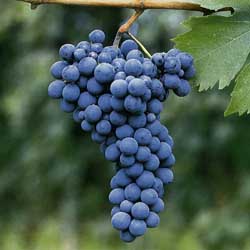Segni
 Back in what seems like another life, I briefly touched the winemaking world when I got involved in starting a winery in Sicily, the biggest island in the Mediterranean sea. That experience was fairly brief, but it did have a few added bonuses, one of which was a pact between Roberto Cipresso and I to make a wine together. Now, after 5 years, that pact will be honored - Segni is about to be bottled.
Back in what seems like another life, I briefly touched the winemaking world when I got involved in starting a winery in Sicily, the biggest island in the Mediterranean sea. That experience was fairly brief, but it did have a few added bonuses, one of which was a pact between Roberto Cipresso and I to make a wine together. Now, after 5 years, that pact will be honored - Segni is about to be bottled.
Let's go back to almost a year ago when Roberto came to New York with 12 small plastic bottles (much easier to transport) filled with different red wines from different vineyards around the boot. That day, we decided what the wine would be composed of. Roberto told me that he knew already what is going to be but he wanted to see what I thought before telling me. After going back and forth tasting through, two bottles stood out; a Syrah from Umbria and an Aglianico from Basilicata. We started then to blend out of the plastic bottles, higher percentage of Syrah, then more Aglianico or in equal parts and with some Montepulciano. In the past, I have done many barrel tastings in various wineries, and one in particular gave the sense of the importance of blending, even if the wine is produced from a single varietal. A clear example is the Fattoria Il Carnasciale, which I visited a couple of times. They grow just one grape - the "Caberlot" - and they have different parcels of land at various altitudes and exposures. In the cellar, all the parcels are vinified separately in barriques and every cask is like an instrument, with the wine maker as the director that needs to assemble the orchestra in order to create a sublime concert. And of course, that's exactly what happened we opened a bott
the Aglianico comes from 44 year old vines situated in Barile (Basilicata), trained on a guyot system with a density of 10,500 plants per Hectare, at 480 meters above sea level. The vines produced 700 gr each and the grapes were harvested in the second week of October 2007. The fermentation lasted 10 days and it was carried out in stainless steel tank. The wine was then aged for 12 months in French oak barrels.
The Syrah came from 7 year old vines, situated in Orvieto (Umbria), and trained in "Cordone Speronato" system with a density of 7800 plants per hectare at 300 meters above sea level. The vines produced 500 gr each and the grapes were harvested at the end of September 2007. The fermentation lasted 10 days and it was carried out in stainless steel tanks. The wine was then aged for 12 months in French oak barrels. There will be 400 bottles and 100 magnums of total production. These two vineyards produce wines possessing big character that could be bottled as single grape, and it was almost a revelation to see how these two vineyards could compliment each other, enhancing the terroir-driven connotations. From the last barrel tasting, the wine was layered with fruits, minerality and salinity, with sweet, firm tannins and a lingering note of dark berries and hints of violet. In January, I will probably open a sample bottle and see how much more time the wine will need to sit in bottle.
Buona Bevuta a Tutti!!!









